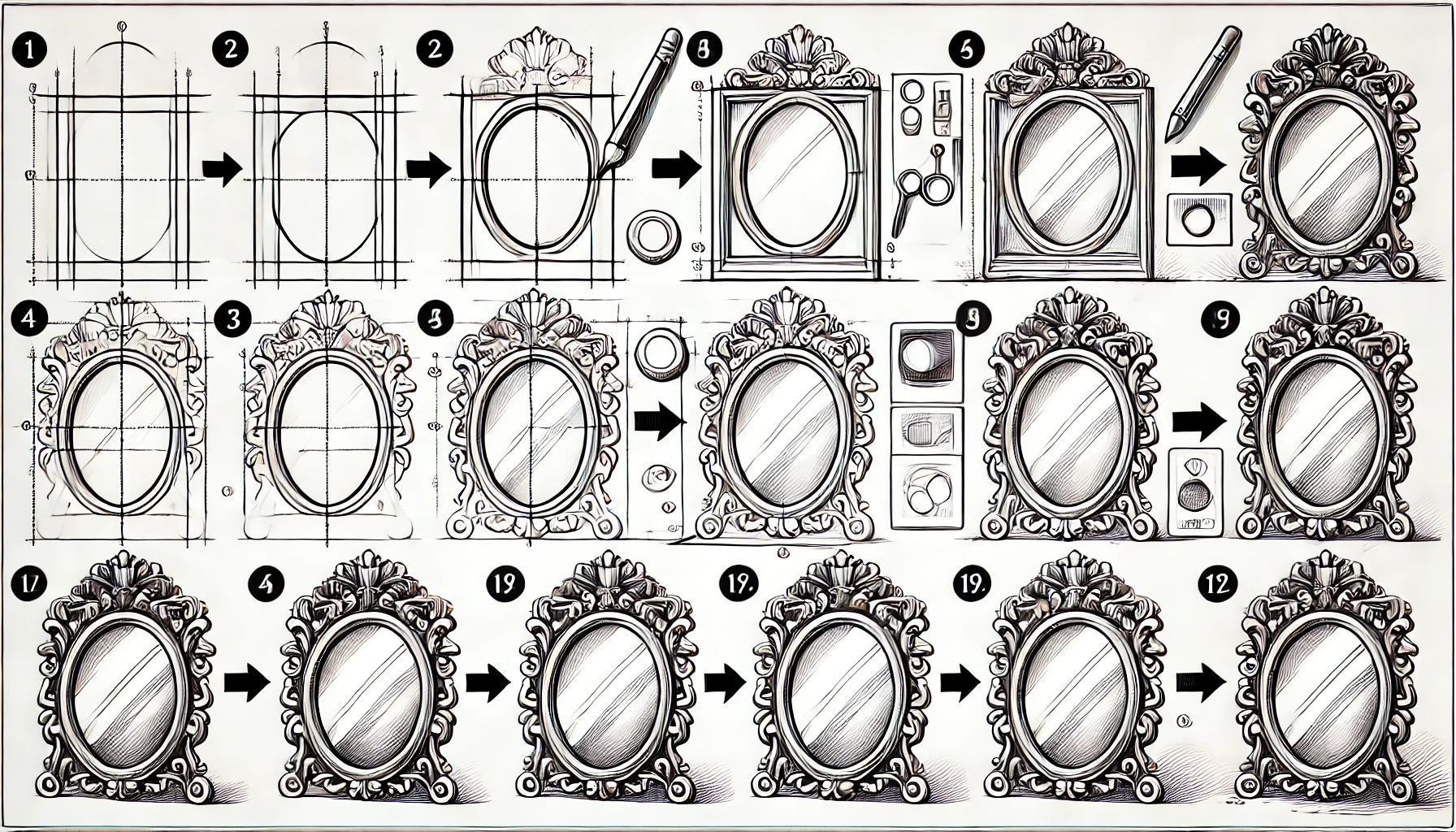Entertainment
How to draw a mirror: Easy tutorial

Drawing a mirror can be a fascinating challenge, as it involves capturing reflections and creating the illusion of depth. Whether you’re an artist looking to improve your skills or a beginner eager to learn new techniques, this guide will walk you through the process of how to draw a mirror.
We will cover essential tools, step-by-step instructions, and tips to make your drawing realistic and captivating.
Tools and materials needed
Before starting, ensure you have the necessary tools and materials:
- Paper: High-quality drawing paper or sketchbook.
- Pencils: A range of pencils from HB to 6B for varying shades.
- Eraser: Kneaded eraser for subtle corrections and a regular eraser for larger mistakes.
- Ruler: For drawing straight lines and measuring proportions.
- Blending stumps: To smooth out shading and create gradients.
- Sharpener: To keep your pencils sharp for detailed work.
Optional supplies
- Colored pencils or markers: For adding color to your drawing.
- Graphite powder: For creating smooth, even shading.
Understanding mirror reflection
A mirror reflects light and images, creating a reversed but accurate representation of the objects in front of it. Understanding these principles is crucial for drawing a realistic mirror:
- The angle of incidence and reflection: The angle at which light hits the mirror (angle of incidence) is equal to the angle at which it reflects (angle of reflection).
- Reversed image: Objects appear reversed in the mirror compared to their actual orientation.
Observing real mirrors
Spend time observing real mirrors to understand how reflections work. Note how objects, light, and shadows appear in the mirror and how the perspective changes.
Step-by-step guide on how to draw a mirror
Drawing a mirror involves capturing reflections and creating a sense of depth and realism. This step-by-step guide will walk you through the process, from sketching the outline to shading and adding details.
Follow these detailed instructions to master the art of drawing a mirror and bring your artwork to life.
Step 1: Sketch the outline
Begin by sketching the basic outline of the mirror. Use a ruler to draw straight lines for the mirror’s frame and ensure symmetry. Common shapes for mirrors include rectangles, ovals, and circles.
- Draw the frame: Outline the shape of the mirror, keeping the lines light so they can be easily adjusted.
- Add details: If the mirror has a decorative frame, lightly sketch these details to be refined later.
Step 2: Draw the reflections
Drawing the reflections inside the mirror is the most challenging part. Start by deciding what will be reflected in the mirror.
- Positioning the reflections: Lightly sketch the objects that will be reflected. Ensure they are correctly positioned according to the angle of the mirror.
- Maintain proportions: Use your ruler to keep the proportions and angles accurate.
Step 3: Shade the mirror and reflections
Shading adds depth and realism to your drawing. Pay close attention to light and shadow in both the mirror and the reflected objects.
- Shading the frame: Begin by shading the mirror’s frame. Use different pencil grades to achieve various shades, creating a metallic or wooden texture.
- Shade the reflected objects: Carefully shade the objects inside the mirror, ensuring the reflections are lighter and slightly blurred compared to the real objects.
- Blend the shading: Use blending stumps to smooth out the shading and create a gradient effect.
Step 4: Add details and highlights
Refining details and adding highlights will make your drawing more realistic.
- Refine the frame: Add intricate details to the mirror’s frame, using darker pencils for shadowed areas and lighter pencils for highlights.
- Highlight the reflections: Use an eraser to create highlights on the reflected objects, simulating light reflections.
Step 5: Final touches
Review your drawing and make any necessary adjustments.
- Clean up lines: Erase any unnecessary lines and clean up the edges.
- Enhance shadows and highlights: Deepen the shadows and enhance the highlights to create more contrast.
Tips for drawing realistic mirrors
Understanding how light and shadow work in reflections is crucial. Practice observing real-life reflections and how light interacts with different surfaces.
Practice perspective
Mastering perspective is essential for drawing accurate reflections. Practice drawing objects from various angles to improve your understanding of perspective.
Use reference images
Reference images can provide guidance and inspiration. Use photos of mirrors and their reflections to help you understand how to capture realistic reflections in your drawings.
Experiment with different techniques
Don’t be afraid to experiment with different drawing and shading techniques. Try using graphite powder for smooth shading or colored pencils to add a splash of color to your mirror drawings.
Common mistakes to avoid
Drawing mirrors can be challenging, and certain common mistakes can hinder the realism of your artwork. Being aware of these pitfalls and knowing how to avoid them can greatly improve your drawing. This section highlights some typical errors made when drawing mirrors and offers tips on how to prevent them.
Incorrect proportions
Maintaining accurate proportions is crucial when drawing reflections. Double-check your measurements and use a ruler to keep lines straight and proportions correct.
Overcomplicating the drawing
Start simple and gradually add details. Overcomplicating the drawing from the beginning can lead to mistakes and frustration.
Ignoring light sources
Always consider the light source in your drawing. Ignoring the light source can result in unrealistic shadows and highlights.
Final thoughts: How to draw a mirror?
Drawing a mirror involves understanding the principles of reflection, mastering perspective, and paying close attention to light and shadow. By following this step-by-step guide on how to draw a mirror, you can create realistic and captivating drawings. Practice regularly, study real-life mirrors, and experiment with different techniques to refine your skills and bring your drawings to life.
Whether you are a beginner or an experienced artist, mastering the art of drawing mirrors can add depth and realism to your artwork. Also, here are some similar articles that you might find useful:
